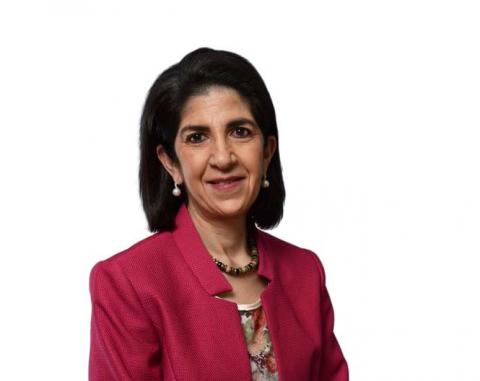This week, CERN is celebrating the 25th anniversary of the LHC experimental programme with a special scientific symposium looking at the LHC’s history, the physics landscape into which the LHC experiments were born, and the challenging path that led to the very successful LHC programme we know today. The symposium will conclude with a presentation of the latest results from the four large experiments.
The Evian meeting, “Towards the LHC Experimental Programme”, took place from 5 to 8 March 1992. It was, to quote the CERN Courier issue of May that year, the meeting that would “always be remembered as the stage where these ideas made their debut”. For those of us who were there, it’s hard to believe that it’s been 25 years since Evian, yet, at the same time, so much has happened since those early ideas first saw the light of day. It has been a long path, full of challenges, new ideas and innovative technologies. Along the way, a great deal of motivation, determination and patience has been applied, and, in the end, rewarded with excellent performances from the accelerators, detectors and computing, and of course wonderful physics results.
One of us, Fabiola, was there as part of the EAGLE collaboration, which, along with eleven other teams, was presenting an expression of interest (EoI) to carry out research at the LHC. There were four EoIs for general-purpose experiments, three for dedicated B-physics experiments, two for neutrino experiments and two for dedicated heavy-ion experiments. The 12th EoI was for heavy-ion physics at CMS, one of the general-purpose experiments put forward at the meeting.
Evian was a landmark, but it was also part of a process. The idea of the LHC had been formally launched at a workshop in Lausanne in 1984. CERN’s Long-Range Planning Committee recommended the LHC in 1987, leading to a meeting on instrumentation in Barcelona in 1989 and a workshop in Aachen in 1990 to study the physics objectives. A Detector Research and Development Committee was also set up in 1990 to stimulate the development of the new technology that would be needed to do physics at a projected collision rate a thousand times higher than anything that had gone before. All this led to the CERN Council agreeing unanimously at its December 1991 meeting that the LHC was the “right machine for the advance of the subject and the future of CERN”. How right they were!
Evian was the natural next step, and then, following the meeting, ideas were refined, collaborations merged, some fell by the wayside, and letters of intent were drafted. The first two of these, for ATLAS and CMS, were both dated October 1992. ATLAS was formed from the merger of two proposals, ASCOT and EAGLE, whereas CMS had evolved from a single proposal presented at Evian. In 1993, the ALICE collaboration’s letter of intent was presented, and LHCb completed the set of large LHC experiments when it presented its letter of intent in 1995.
Unlike Fabiola, the other author of this piece would not be involved in the LHC until much later. At the time of the Evian meeting, Eckhard had recently moved from the OPAL experiment at CERN to DESY, which was just embarking on an exciting new programme with the HERA electron-proton collider, which would not only do excellent science in its own right, but would also provide invaluable input to LHC analyses. Particle physics is always intricately entwined within and between laboratories in this way.
All this and more will be covered in the “25 years since Evian” symposium on Friday, 15 December.
Do come and join us in the Main Auditorium, or watch the live stream of the event in the Council Chamber, the Filtration Plant or the TH Auditorium or online, from 11.00 a.m.– 4.00 p.m. It will be a wonderful celebration of physics and the great accomplishments of the worldwide high-energy physics community.
Find out more information here.
This opinion piece has been written by Fabiola Gianotti, Director-General, and Eckhard Elsen, Director for Research and Computing.

